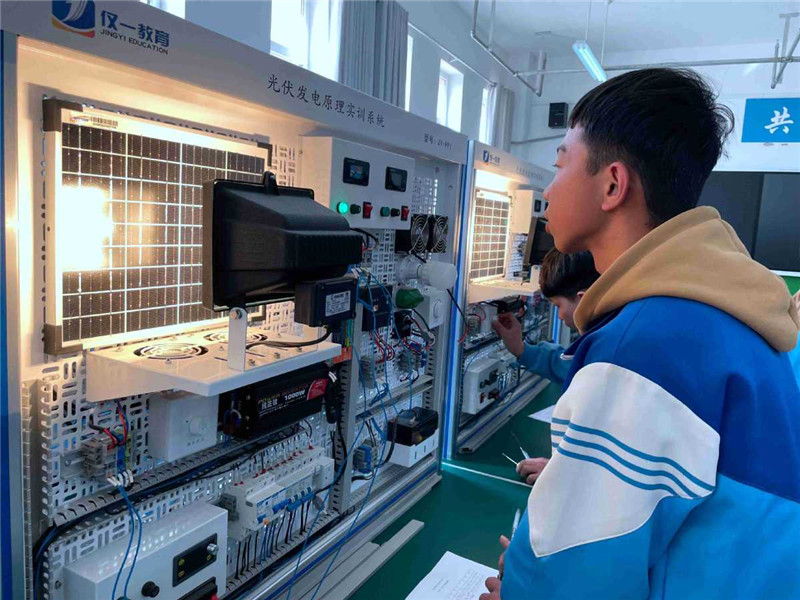Education
Region sets pace in vocational education

Students learn agricultural technology, electrical engineering and other skills at the vocational school in Hongsibu district, Wuzhong city, Ningxia Hui autonomous region. GUO SHAOYU/FOR CHINA DAILY
Cooperation project
Chen, who comes from Quanzhou, Fujian province, has been in his post for three years as part of a cooperation project.
Launched by the central government last year, the project has mobilized 247 experienced school leaders from eight eastern provinces, who take a team of four or five to 160 county-level administrations in West China to improve the quality of education.
Now in their second semester in Ningxia, Chen and four colleagues from Quanzhou feel they are shouldering a heavy responsibility, as vocational education in Hongsibu is still in the early stages.
Chen said the students have relatively poor academic backgrounds compared with their counterparts in Quanzhou, who benefit from a better economy and development of vocational education.
The average age of the 140 or so teachers at the Hongsibu school is just 32, with some being transferred from high schools, and others recruited immediately after graduation.
Chen emphasizes the need to improve the teachers' capabilities and deepen their understanding of vocational education by enhancing exchanges.
Apart from sending a dozen teachers to his school in Quanzhou for learning and training every semester, he invites colleagues from Quanzhou to visit Ningxia to offer short-term support.
A total of six department heads and experienced teachers are currently at the Hongsibu school for a two-month program.
They not only give demonstration lessons, but more important, provide advice on building a scientific, flexible curriculum and management system for various departments.
Unlike volunteer teaching programs commonly seen in rural areas of China, Chen thinks the participation of school leaders in a cooperation project due to last more than a decade will make it easier to mobilize resources, which will hopefully result in changes to the educational system.
While strengthening moral and behavioral guidance for its students, the school also sent eight of them to Quanzhou recently for a month of intensive training in industrial design and the internet of things.
These students are expected to share their experiences with classmates and attend skills competitions.
"A quality education is all about accumulation. It takes time," Chen said.
During this year's two sessions, which closed on March 13, Ma Zongbao, vice-chairman of Ningxia Hui autonomous region and a member of the 14th National Committee of the Chinese People's Political Consultative Conference, called for the coordinated development of vocational education in western China.
He said this region has expanded vocational education and largely improved educational quality. It has also established a vocational education system in line with the development of industries in the area.
However, there is still a disparity with counterparts in central and eastern regions, and it will take time to meet the requirements of major national strategies, Ma said.
Undergraduate-level vocational colleges have yet to be established in Ningxia, Tibet autonomous region, and Qinghai province, Ma added.
He suggested that support be strengthened and priority given to distributing resources to improve vocational education in western areas of the country.
Cross-regional exchanges should be promoted, as well as cooperation between vocational schools, research institutions and enterprises, Ma added.

Copyright 1995 - . All rights reserved. The content (including but not limited to text, photo, multimedia information, etc) published in this site belongs to China Daily Information Co (CDIC). Without written authorization from CDIC, such content shall not be republished or used in any form. Note: Browsers with 1024*768 or higher resolution are suggested for this site.
Registration Number: 130349









